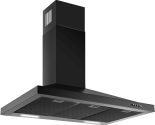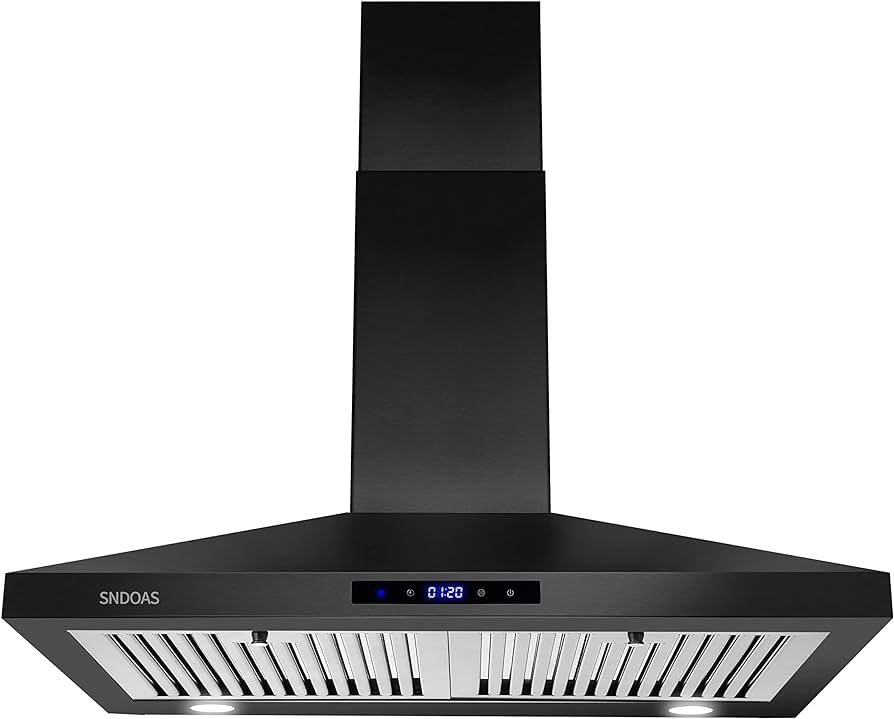
What Should Be the Duct Size for a Range Hood?
Introduction:
Selecting the proper duct size for a range hood is crucial for effective kitchen ventilation. An appropriately sized duct ensures that the range hood operates efficiently, removing smoke, odors, and grease particles from the kitchen. This comprehensive guide explores the importance of duct size, factors to consider, common sizes, installation tips, and more.

What Should Be the Duct Size for a Range Hood?
The Importance of Proper Duct Size
Choosing the right duct size for your range hood is vital for its overall performance and the health of your kitchen environment.
Efficiency: A properly sized duct allows the range hood to operate at peak efficiency. It ensures that the air is moved at the appropriate speed and volume, effectively capturing and venting out contaminants. An undersized duct can restrict airflow, causing the range hood to work harder and less effectively.
Noise Reduction: Using the correct duct size helps in reducing operational noise. When the duct size matches the range hood’s specifications, the airflow is smoother and less turbulent, which translates to quieter operation. Conversely, an undersized duct can lead to excessive noise as the air struggles to pass through the restricted space.
Longevity of the Range Hood: Using the right duct size can also extend the life of your range hood. When the duct size is appropriate, the blower motor does not need to work as hard, reducing wear and tear. An overworked motor in an undersized duct system can lead to premature failure and increased maintenance costs.
Safety: Proper ventilation is essential for maintaining indoor air quality. An adequately sized duct ensures that harmful gases, such as carbon monoxide, are effectively expelled from the kitchen, contributing to a safer cooking environment.
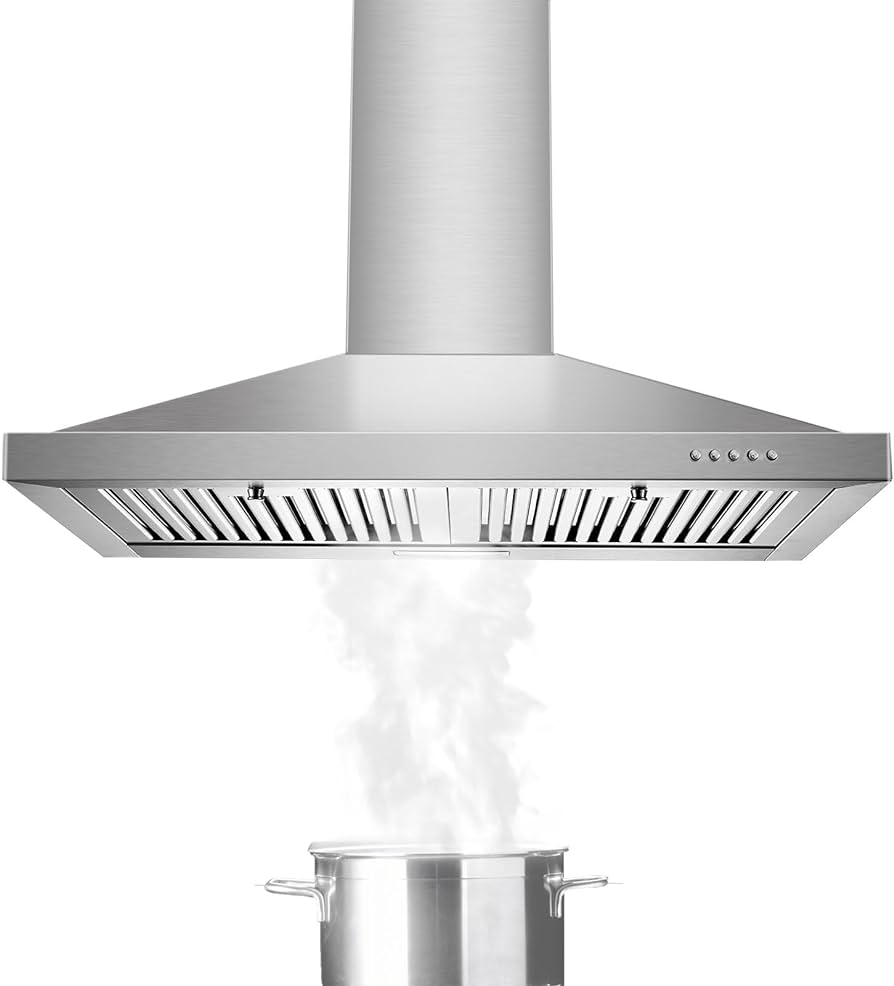
Common Duct Sizes for Range Hoods
Understanding the common duct sizes helps in making an informed decision when installing or upgrading a range hood.
Standard Sizes: Range hood ducts typically come in standard sizes, ranging from 4 inches to 10 inches in diameter. The most common sizes are 6 inches and 8 inches, as they balance airflow efficiency and ease of installation.
Diameter Considerations:
- 4-inch Duct: Suitable for small, low-capacity range hoods typically found in compact kitchens or apartments. These range hoods generally have a lower CFM (cubic feet per minute) rating.
- 6-inch Duct: Commonly used for mid-range range hoods with moderate CFM ratings. It provides a good balance between airflow capacity and ease of installation.
- 8-inch Duct: Ideal for high-capacity range hoods with higher CFM ratings. This size provides ample airflow for larger kitchens and heavy-duty cooking applications.
- 10-inch Duct: Used for industrial or commercial range hoods with very high CFM ratings. It ensures maximum airflow for extensive cooking activities and large kitchen spaces.
CFM to Duct Size Relation: CFM ratings of range hoods directly influence the required duct size. A higher CFM rating demands a larger duct to accommodate the increased airflow. For example:
- Up to 400 CFM: A 4-inch duct might suffice, although 6 inches is often recommended for better performance.
- 400 to 600 CFM: A 6-inch duct is typically adequate.
- 600 to 900 CFM: An 8-inch duct is recommended to handle the airflow efficiently.
- Above 900 CFM: A 10-inch duct might be necessary for optimal ventilation.
Factors Affecting Duct Size Selection
Several factors play a role in determining the appropriate duct size for your range hood. Considering these aspects ensures optimal performance.
Range Hood Type: The type of range hood (under-cabinet, wall-mounted, or island range hoods) influences the duct size. For example, under-cabinet range hoods often require smaller ducts compared to island range hoods, which may need larger ducts due to their higher capacity and increased distance from external walls.
Kitchen Layout: The layout of your kitchen, including the length and complexity of the duct run, affects the required duct size. Longer runs with multiple bends necessitate larger ducts to maintain efficient airflow and reduce resistance.
Duct Material: The material of the duct (flexible vs. rigid) can impact the airflow. Rigid ducts offer smoother airflow with less resistance, while flexible ducts can cause turbulence and reduced efficiency. Therefore, rigid ducts are preferred for longer runs and higher CFM range hoods.
Local Building Codes: Local building codes and regulations may specify minimum duct sizes based on the range hood’s capacity. Compliance with these regulations is essential for safety and to meet inspection requirements.
Manufacturer Recommendations: Always refer to the range hood manufacturer’s recommendations for duct size. These guidelines are based on extensive testing and ensure that the range hood performs as intended.
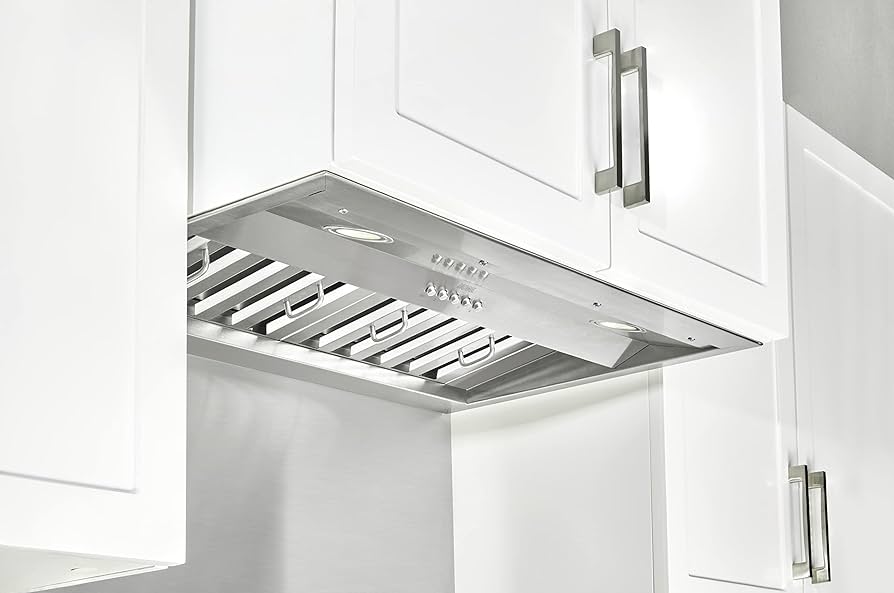
Installation Tips for Range Hood Ducts
Proper installation of range hood ducts is crucial for maintaining efficiency and performance. Here are some practical tips to consider.
Use the Correct Size: Ensure that the duct size matches the range hood’s specifications. Avoid reducing the duct size, as this can restrict airflow and compromise performance. If the duct size needs to be reduced, use a transition piece and minimize the reduction’s impact by keeping it as short as possible.
Minimize Bends and Elbows: Keep the duct run as straight as possible to reduce resistance and maintain efficient airflow. Limit the number of bends and elbows, and use long-radius elbows instead of short-radius ones to ensure smoother airflow.
Opt for Rigid Ducts: Use rigid metal ducts instead of flexible ducts for better performance. Rigid ducts offer smoother airflow and are easier to clean, reducing the risk of grease build-up and fire hazards.
Seal Duct Joints: Seal all duct joints with high-temperature foil tape or mastic sealant to prevent air leaks. Leaks can reduce the efficiency of the ventilation system and lead to poor indoor air quality.
Provide Adequate External Venting: Ensure that the duct vents to the outside of the building, not into an attic or crawl space. Use a weatherproof vent cap with a backdraft damper to prevent outside air, rain, and pests from entering the duct.
Common Mistakes to Avoid
Awareness of common installation mistakes helps in achieving the best performance from your range hood.
Undersizing the Duct: Using a duct that is too small for the range hood’s capacity is a common mistake. This can lead to reduced airflow, increased noise, and overworked blower motors.
Excessive Duct Length: Running ducts over excessive distances with multiple turns and bends can reduce airflow and efficiency. Plan for the shortest and straightest route possible to maintain optimal performance.
Using Flexible Ducts: While flexible ducts are easier to install, they can cause airflow turbulence and reduce efficiency. Opt for rigid ducts whenever possible to ensure smoother airflow.
Improper Sealing: Failing to seal duct joints properly can lead to air leaks, reducing the range hood’s effectiveness and potentially causing backdrafting of harmful gases.
Ignoring Building Codes: Neglecting local building codes and manufacturer recommendations can result in safety issues and failed inspections. Always adhere to the required standards for duct size and installation practices.
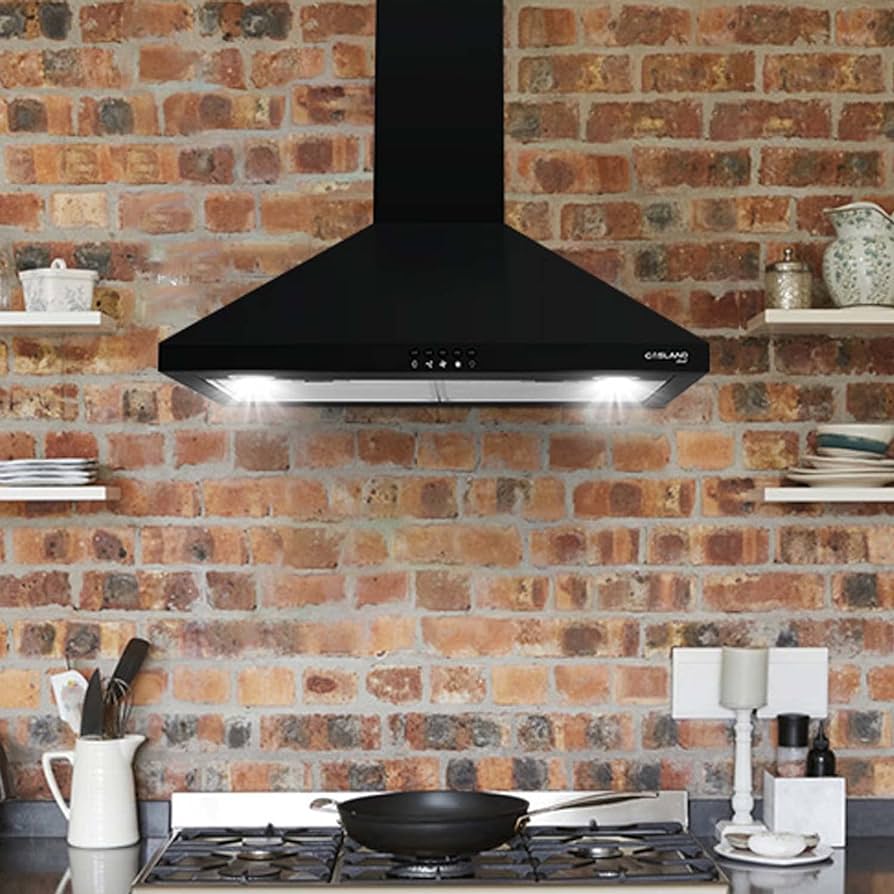
Maintaining Range Hood Ducts
Proper maintenance is essential for ensuring that range hood ducts remain effective and efficient over time.
Regular Cleaning: Clean the range hood and duct system regularly to prevent grease build-up, which can reduce airflow and increase the risk of fire. Use degreasing agents and tools designed for cleaning duct interiors.
Inspecting for Leaks: Periodically inspect the duct system for any signs of leaks or damage. Repair any leaks with high-temperature foil tape or mastic sealant to maintain efficiency.
Checking the Vent Cap: Ensure that the external vent cap is clean and functioning correctly. Remove any obstructions, such as debris or nests, that could block airflow.
Replacing Filters: If your range hood has filters, replace or clean them according to the manufacturer’s recommendations. Clean filters ensure that the ventilation system operates efficiently and maintains good indoor air quality.
Upgrading Ducts: Consider upgrading the duct system if you notice persistent performance issues or if you upgrade to a higher capacity range hood. Larger, rigid ducts can improve airflow and reduce noise levels.
User Reviews and Experiences
Insights from user reviews and experiences provide practical perspectives on the real-world performance of range hood duct systems.
Positive Feedback: Many users report significant improvements in ventilation efficiency and noise reduction when using the correct duct size. They often emphasize the importance of adhering to manufacturer recommendations for optimal performance.
Noise Reduction: Users frequently highlight the reduction in operational noise when using appropriately sized and sealed ducts. The smoother airflow provided by rigid ducts and fewer bends contributes to a quieter kitchen environment.
Improved Air Quality: Effective ventilation has a noticeable impact on indoor air quality. Users who upgraded to larger or properly sized ducts often report better odor removal and reduced lingering smoke, enhancing their overall kitchen experience.
Installation Challenges: While generally positive, some users mention challenges during installation, particularly with routing ducts through complex kitchen layouts. Seeking professional assistance or carefully planning the duct route can help address these challenges.
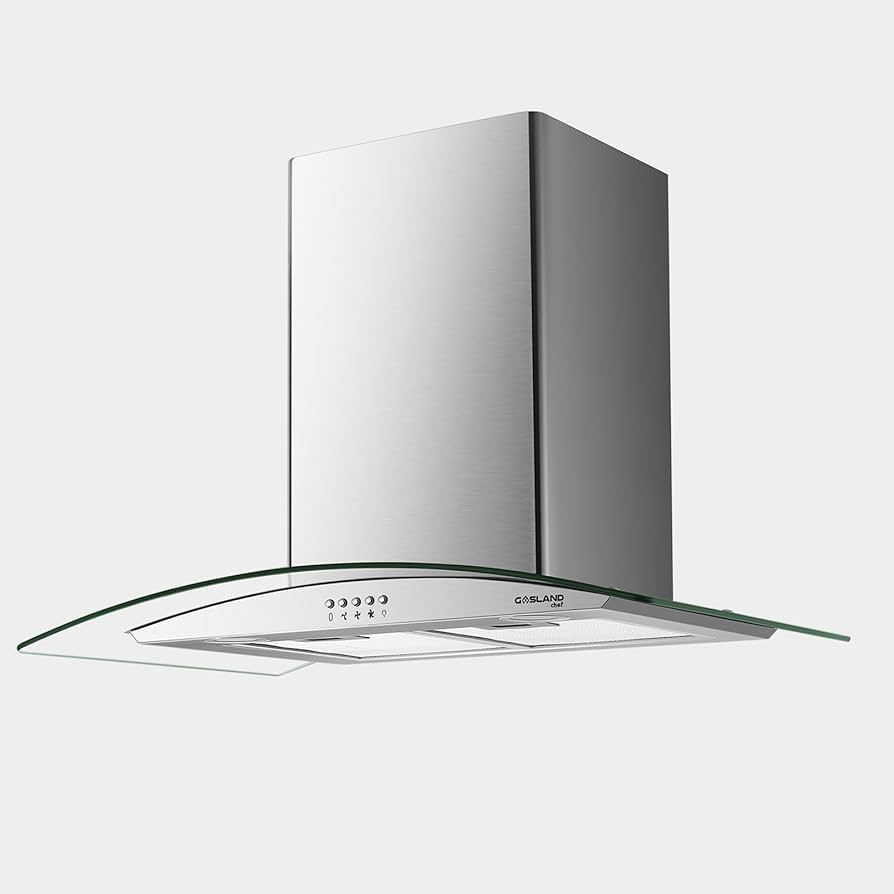
Comparing Duct Sizes and Materials
A comparison of different duct sizes and materials helps in understanding their impact on performance and ease of installation.
Flexible vs. Rigid Ducts:
- Flexible ducts are easier to install and navigate through tight spaces but can cause airflow turbulence and are harder to clean.
- Rigid ducts provide smoother airflow, are more durable, and easier to maintain but require more precise installation.
Diameter Comparison:
- Smaller ducts (4-6 inches) are easier to install in compact spaces but may restrict airflow for higher capacity range hoods.
- Larger ducts (8-10 inches) provide better airflow for high-capacity range hoods but require more installation space and effort.
Material Durability:
- Metal ducts (galvanized steel or aluminum) are durable, resistant to damage, and efficient in maintaining good airflow.
- Plastic or PVC ducts are less common for range hoods due to heat resistance concerns and potential for damage.
Conclusion
Choosing the appropriate duct size for your range hood is pivotal for ensuring optimal performance, efficiency, and safety. From understanding the relationship between CFM and duct size to considering kitchen layout and duct material, this comprehensive guide covers all aspects of range hood duct selection and installation. By adhering to manufacturer recommendations, avoiding common mistakes, and maintaining the duct system, you can achieve a well-ventilated, quiet, and safe kitchen environment. This thorough exploration provides valuable insights and practical tips, ensuring that your range hood and duct system operate at their best.






